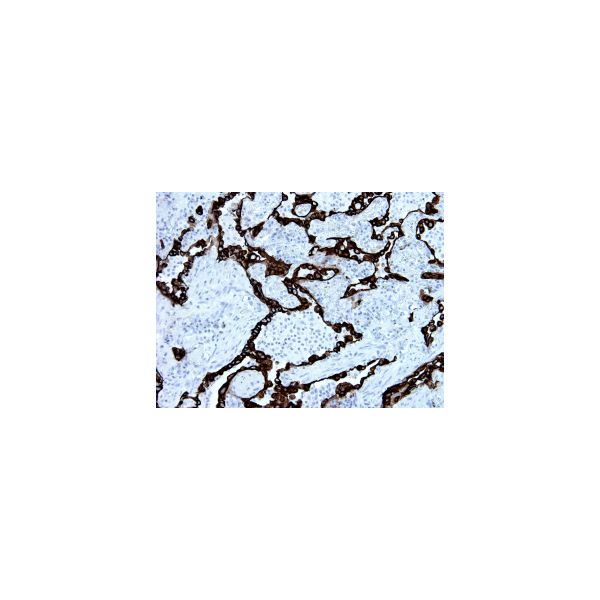Anti-human Pan Cytokeratin mouse monoclonal, CE certified (IVD), 0,1 ml, Species x-Reactivity: human, dog/canine, Applications: IHC
Pan Cytokeratin
Cat#: BSH-7124-100 100ul, BSH-7124-1 1ml, BSH-7124-RTU 7ml
Clone: BS5
S/R: human, dog, rat
Application: IHC, IF
Biochemically, most members of the CK family fall into one of two classes, type I (acidic polypeptides) and type II (basic polypeptides). The type II cytokeratins consist of basic or neutral proteins which are arranged in pairs of heterotypic keratin chains coexpressed during differentiation of simple and stratified epithelial tissues. Cytokeratins comprise a diverse group of intermediate filament proteins (IFPs) that are expressed as pairs in both keratinized and non-keratinized epithelial tissue. Cytokeratins play a critical role in differentiation and tissue specialization and function to maintain the overall structural integrity of epithelial cells. Cytokeratins have been found to be useful markers of tissue differentiation which is directly applicable to the characterization of malignant tumors.
 |
 |
 |
|
CKpan stained tissue sections. CKpan Optibody (Clone: BS5) with 1:200 dilution offers similar membranous staining pattern of the hepatocytes and bile ducts as the optimal staining criteria . Columnar epithelium of appendix is strongly stained without any background staining. CKpan shows breast ductal breast carcinoma cells clearly and intensively as well as lung adenocarcinoma cells . Optibody offers strong or moderate staining intensity in clear cell carcinoma of kidney. |
||
| Price | 1.155,00 RON (preturile sunt fara TVA) | ||||||
|---|---|---|---|---|---|---|---|
| Description |
Pan Cytokeratin Cat#: BSH-7124-100 100ul, BSH-7124-1 1ml, BSH-7124-RTU 7ml Biochemically, most members of the CK family fall into one of two classes, type I (acidic polypeptides) and type II (basic polypeptides). The type II cytokeratins consist of basic or neutral proteins which are arranged in pairs of heterotypic keratin chains coexpressed during differentiation of simple and stratified epithelial tissues. Cytokeratins comprise a diverse group of intermediate filament proteins (IFPs) that are expressed as pairs in both keratinized and non-keratinized epithelial tissue. Cytokeratins play a critical role in differentiation and tissue specialization and function to maintain the overall structural integrity of epithelial cells. Cytokeratins have been found to be useful markers of tissue differentiation which is directly applicable to the characterization of malignant tumors.
|
||||||

 English
English




